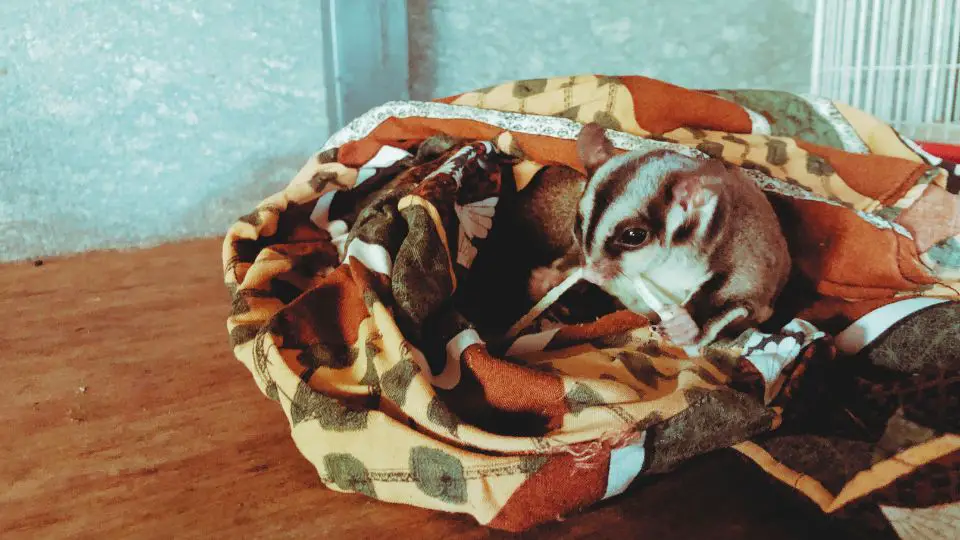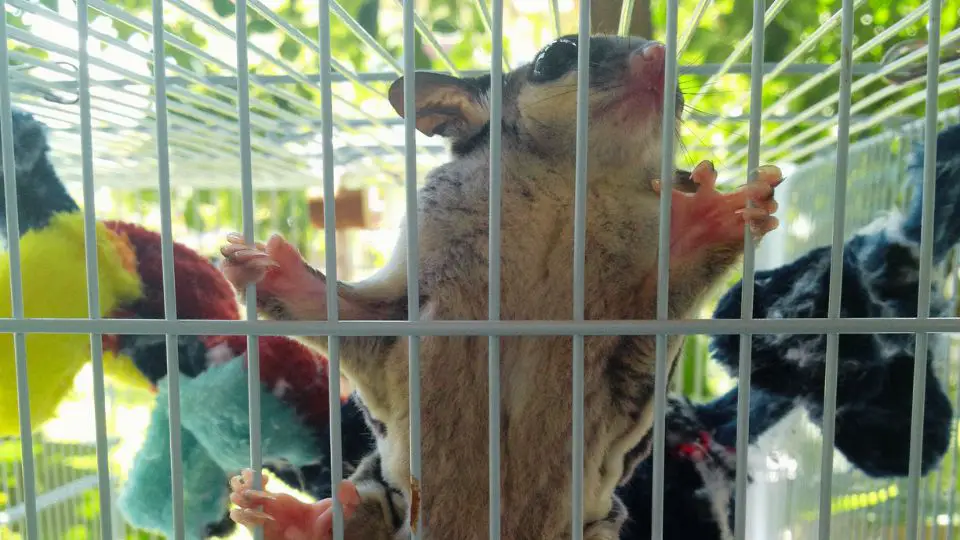Given the right conditions, these tiny nocturnal animals are great pets. In addition to being cute and cuddly, sugar gliders are members of the same family as Tasmanian devils, kangaroo, and wombat species.
But how long do sugar gliders live? Sugar gliders may survive in the wild for 3 to 9 years. Sugar gliders live somewhat longer in captivity, ranging from 10 to 15 years. This gives them a life expectancy of 9 years on average. Nutrition, temperature, the environment, and their health are all factors that determine their longevity.
Despite their extended lifespan, these creatures are vulnerable to stress and other issues. Because their bodies are delicate and they lack robust immune systems, preserving a clean environment, providing nutritious and adequate food, providing regular health examinations, and treating them properly are all critical to sustaining their health.
Make sure you have enough money and time to provide good care for sugar gliders for the next 15 years. If you want to re-home or sell them later, don’t retain them in the first place. They should not be acquired on the spur of the moment.
What influences a sugar glider lifespan
Dietary, environmental, and inherited or created health issues are the key variables influencing a sugar glider’s longevity.
Diet
Diet is one of the most important factors in ensuring that your marsupial has a long and happy life. The notion of appropriate nutrition varies depending on the species. Sugar gliders have tiny stomachs due to their diminutive stature.
This means they need a steady flow of fluids to be hydrated and healthy. The following drinks may help your pet’s health:
- Apple juice
- Gatorade
- Water
Yes, all three of these items are healthy for your pet to eat and will keep him hydrated throughout the day. Be careful about the gatorade though: it needs to be given no more than a few drops in its water.
If you provide your pet the required daily nutritional and caloric intake, you may assist improve his or her life expectancy.
The ideal sugar glider diet includes the following critical elements, which give all of the needed and vital nutrients.
- A gravy mix that provides all of the nutrients that these animals need while also adding moisture and taste to the food you buy at the store
- Bread, apples, and yogurt are other key elements in your sugar glider’s diet.
I’d want to go through several items that you should never feed your young marsupial. Non-organic fruits and veggies might shorten your pet’s life since they contain a lot of dangerous chemicals and pesticides. Even a trace quantity of these hazardous compounds may shorten your pet’s life. Chocolates, ice cream, and raw meats, which are heavy in sugar, salt, and fat, should never be given to your sugar glider as they can shorten your pet’s life!
Environment
The habitat in which a sugar glider lives is critical to its survival. Furthermore, they exist under extremely specialized settings in the wild.
Sugar gliders are at danger of escaping or being injured if your house is not properly prepared for them. Aside from that, sugar gliders have an incredible capacity to squeeze through microscopic fractures and the smallest of holes.
Getting into areas they shouldn’t be may have disastrous consequences.
They may put non-food things in their mouth; swallowing may result in impaction but may also pose a choking danger.
Sugar gliders have also been known to drown in toilets, and they can be wounded by other animals and pets, which is almost always deadly.
Health problems
Untrained eyes may have difficulty detecting health issues of a sugar glider.
Many illnesses and problems that sugar gliders suffer from are caused by food imbalances, including obesity, malnutrition, and vitamin/mineral deficiencies. We can also mention hypocalcemia, anemia, or metabolic bone disease as conditions these little ones can suffer from if not cared for properly.
Bacterial, parasite, or fungal infections are linked to other disorders. These may include diarrhea, vomiting, or toxoplasmosis.
How Long Do Sugar Gliders Live In The Wild vs Captivity?
Sugar gliders live in the wild for 3 to 9 years. These possums are capable of fending for themselves in their natural surroundings. Sugar gliders live in groups in the wild because they nest in tree hollows. They do so with a group of roughly 10 additional grownups!
They are most often found in woodlands, although they may also be found in rural gardens and on plantations. Sugar gliders remain with their moms until they are 7 to 10 months old.
When temperatures drop below freezing, these animals gather together and enter a condition of torpor to remain warm. Torpor is an innate process that assists many animals in surviving and conserving energy in even the coldest of settings.
In captivity, sugar gliders live for an average of 10-15 years. If they are to live up to their life expectancy and potential, they must be reasonably considered long-term pets.
Having said that, sugar gliders need the companionship of at least one other sugar glider. Otherwise, individuals may have mental health and behavioral disorders, which are common among gliders who are housed alone.
While it is excellent for sugar gliders to connect with their owners, the companionship of a human is just not the same and will never be. Regardless of what we wish to believe.
They are used to live in colonies of 30 gliders or more in the wild, and this is part of their character. As a result, any potential owners should consider if they can house and care for at least two sugar gliders!
Nonetheless, when properly cared for, they make terrific pets. They are witty, bright, and gregarious. They have been known to get quite close to their owners after being socialized and gaining confidence.
How can the sugar glider reach his full life expectancy
Sugar gliders need a specific degree of care in order to survive. They are rather difficult to care for, and you should do your homework ahead of time to find out precisely what is necessary before taking one home.
You must also be prepared to do all in your power to help them; being nocturnal and very active has its drawbacks.
Sugar gliders are called so due to their penchant for sweet-tasting fruits, but you need to be mindful of the amount of sugar they consume. They do not need to gorge or exclusively eat foods rich in just sugar; nor should they be eating highly processed sugar substitutes such as high-fructose corn syrup. About 75% of a sugar glider’s diet should consist of fruit and veg, while 25% should be protein.
Sugar gliders need a large cage since they like having space to play and climb. Ideally, you should maintain more than one sugar glider since they will be happier and more fulfilled in the company of others. If you do decide to do so, you will almost certainly need a larger cage. The size should be proportional to the amount of gliders you store. But remember, sugar gliders are nocturnal. They will be up at night!
Sugar gliders like playing with toys and need a lot of these types of activities and interactions to keep their minds busy and to avoid boredom. As a result, you should try to supply them with as many toys as possible. Chew toys, ladders, bird toys, tunnels, and exercise wheels are all excellent alternatives.







